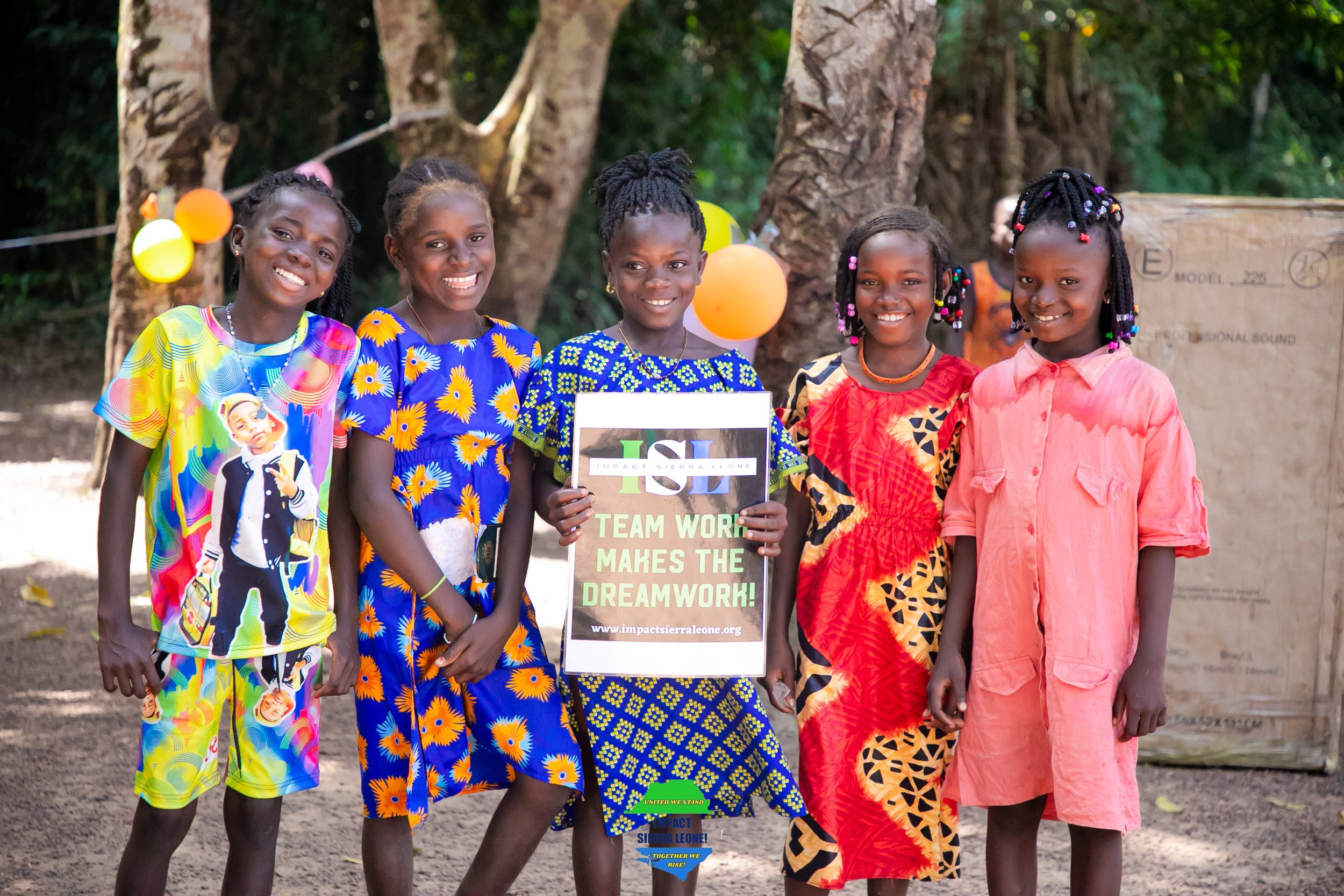Impact Sierra Leone.
Planting Seeds of Life.

Our goal is to provide solutions and interventions that alleviate poverty in Sierra Leone.
Making A Strategic Impact
Impact Sierra Leone is a nonprofit organization founded in Washington, DC by two daughters of Sierra Leone, Adama Kalokoh & Yeabu Conteh.
The mission of Impact Sierra Leone is to reduce poverty & resource deprivation in Sierra Leone by implementing education, agriculture, and waste management programs.
Impact Sierra Leone has adopted the village and residents of Foindu, Sierra Leone to pilot the Seeds of Life Program initiatives. The women of Foindu are the primary stakeholders of current ISL initiatives.
Seeds of Life Program
At the forefront of change, our non-profit challenges traditional norms to drive impactful social innovation. The Seeds of Life Program intends to mitigate 8 points of development in Sierra Leone, starting in the village of Foindu. The first project of the Seeds of Life Program will focus on our commitment to educational & vocational development in Sierra Leone. The Vocational Training Center addresses Seed 3 (Vocational & Technological Development) in our Seeds of Life Program.
The Sustainable Development Goals @
The Agribusiness Hub
-
Food security is a human right.
-
Healthcare is a human right.
-
Clean Water & Sanitation
Water & sanitation are human rights.
-
Affordable & Clean Energy
Energy is a human right.
-
Provision is a human right.
-
Industry, Innovation, & Infrastructure
Infrastructure is a human right.
Upcoming Events
BUILDING PROJECT, 2025
FOINDU IMPACT VOCATIONAL SKILL TRAINING CENTER
TOGETHER WE BUILD TO HARVEST HOPE
The Impact Vocational Training Center will be a dedicated facility designed to empower 40 women from the Foindu community each year by providing training in income-generating skills of their choice. The construction of the Impact Vocational Training Center in Foindu Village is the first phase of an agribusiness hub. The vocational center’s success will lay the foundation for the broader agribusiness hub, demonstrating the impact of community-focused development which includes; a clean energy center, sanitation center and clean water center. Together, these components will create a comprehensive ecosystem for sustainable agribusiness, but starting with the vocational center ensures rapid and visible benefits, catalyzing community engagement and external investment for the hub’s expansion to be carried out in the Village.
At the Impact Vocational Training Center, our mission is to empower women in Foindu Village, Sierra Leone, by equipping them with essential skills that foster self-reliance, creativity, and economic independence. Most of these women, who have dedicated their lives to farming, will gain the tools to diversify their livelihoods and create brighter futures for themselves and their families.
This initiative not only addresses the need for economic empowerment but also serves as a morale booster, fostering sustainable development in the community. This proposal outlines our vision, programs, and funding requirements to transform the lives of 40 women beneficiaries, as well as the youth and broader community in Foindu.
The groundbreaking ceremony at the future site of the Agribusiness Hub in Foindu has been carried out
The Agribusiness Hub will be a comprehensive micro-industrial facility, featuring a vocational training center, a sanitation center, a clean water center, and a clean energy center.
In collaboration with the Foindu community, Impact Sierra Leone is working to complete the construction of The vocational training center by the end of 2025.
Contact Us
Interested in working together? Fill out some info and we will be in touch shortly. We can’t wait to hear from you!








